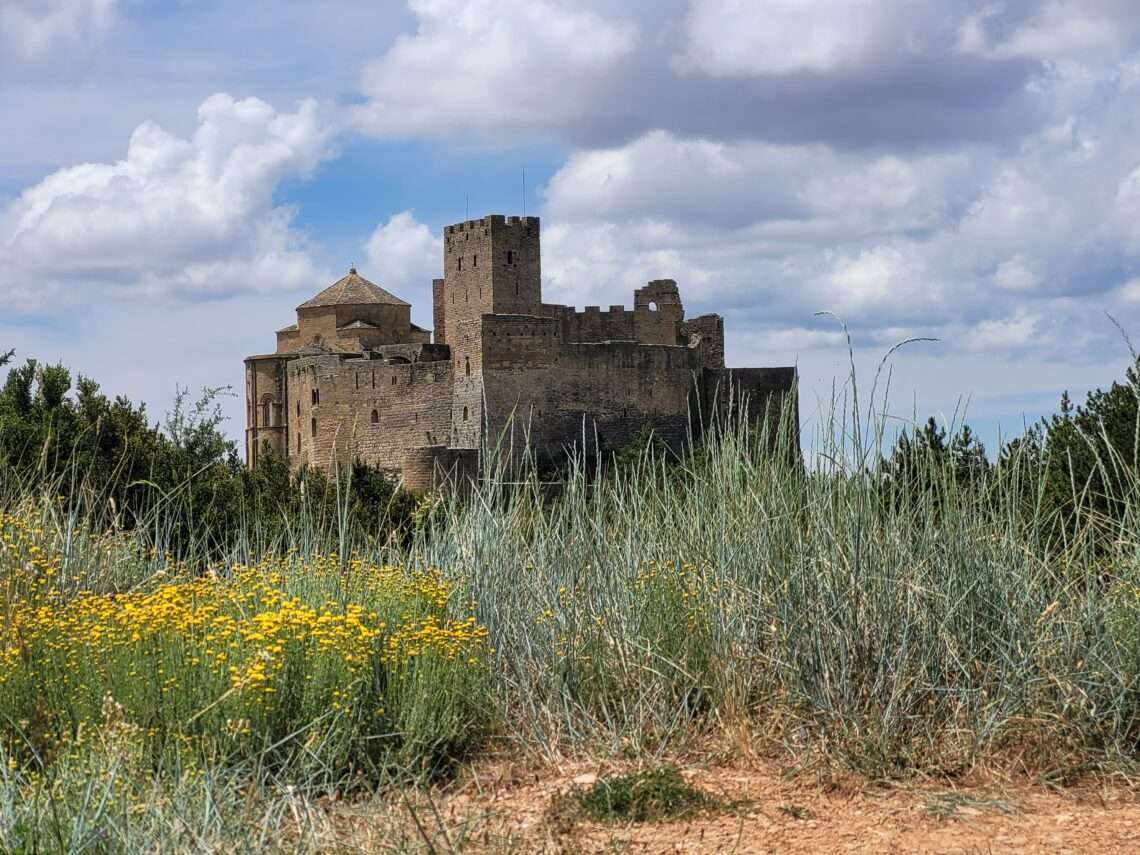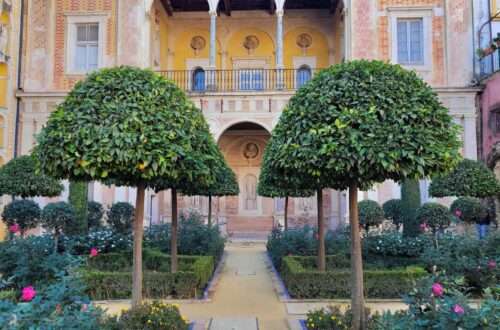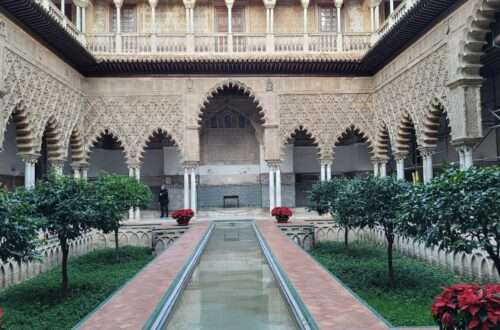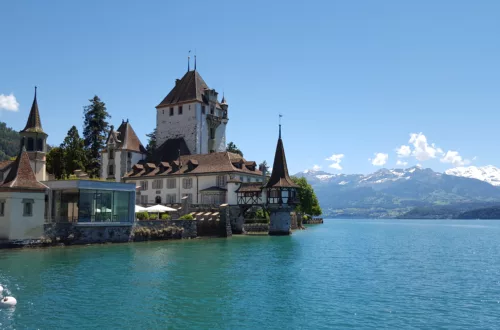Loarre Castle, known locally as El Castillo de Loarre, is a well-preserved Romanesque fortress dating back to the 11th century near Huesca, Spain. It was built in stages and has had varied owners and uses over the past thousand years. Most recently, before being declared a historical monument, it was home to shepherds and their sheep. This castle was already on our radar when we visited Zaragoza this past summer. We made a day trip here and I enjoyed the visit so much that I chose it for my first blog post from the trip!
A quick history of Loarre Castle
Sancho III the Great, of Navarre, was the first to build here, commissioning the Homage Tower, the Tower of the Queen, and the Church of St. Mary. Under the reign of a later Sancho (Ramirez in 1071), the fortress was extended and the St. Augustine Monastery, Church of St. Peter, and the Royal Chapel were added. The monks didn’t stay very long and the fortress was used later to protect the people of Loarre. Various nobles called the castle home throughout the Middle Ages until it was abandoned in the 16th century. Having been frozen in time, aside from the wear and tear of the elements and temporary inhabitants, the well-preserved castle welcomes visitors today offering a glimpse back in time.
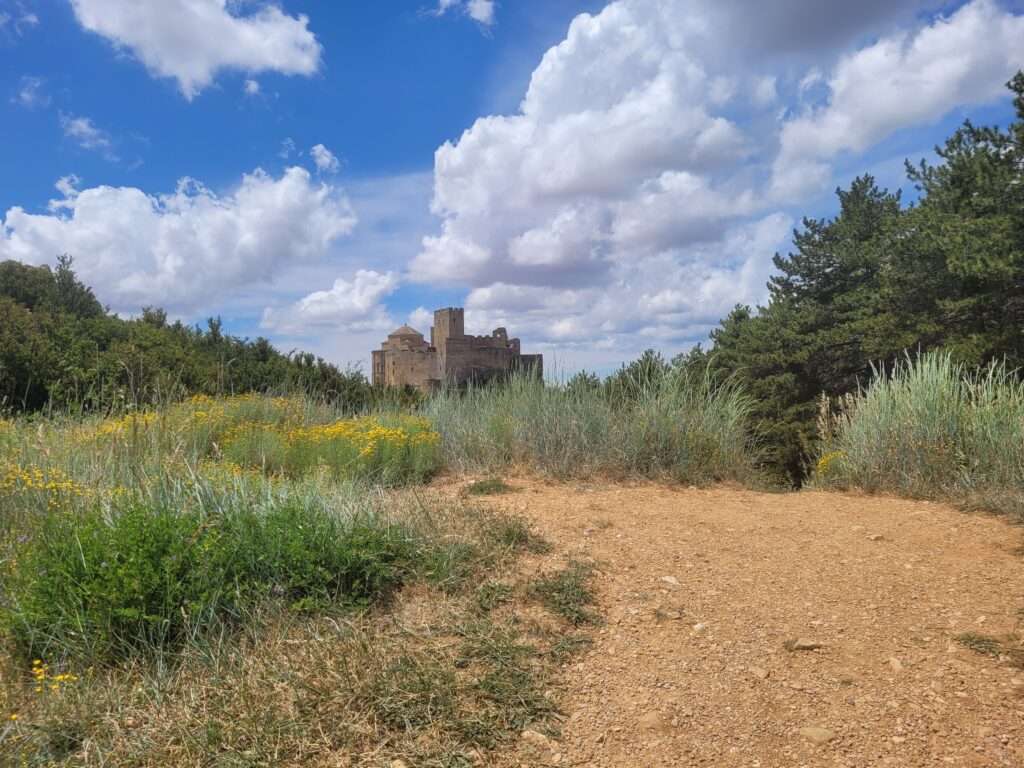
Photo above: As we ascended the windy road through the countryside, Loarre Castle came into view. I had to stop and take a photo. It was beautiful.
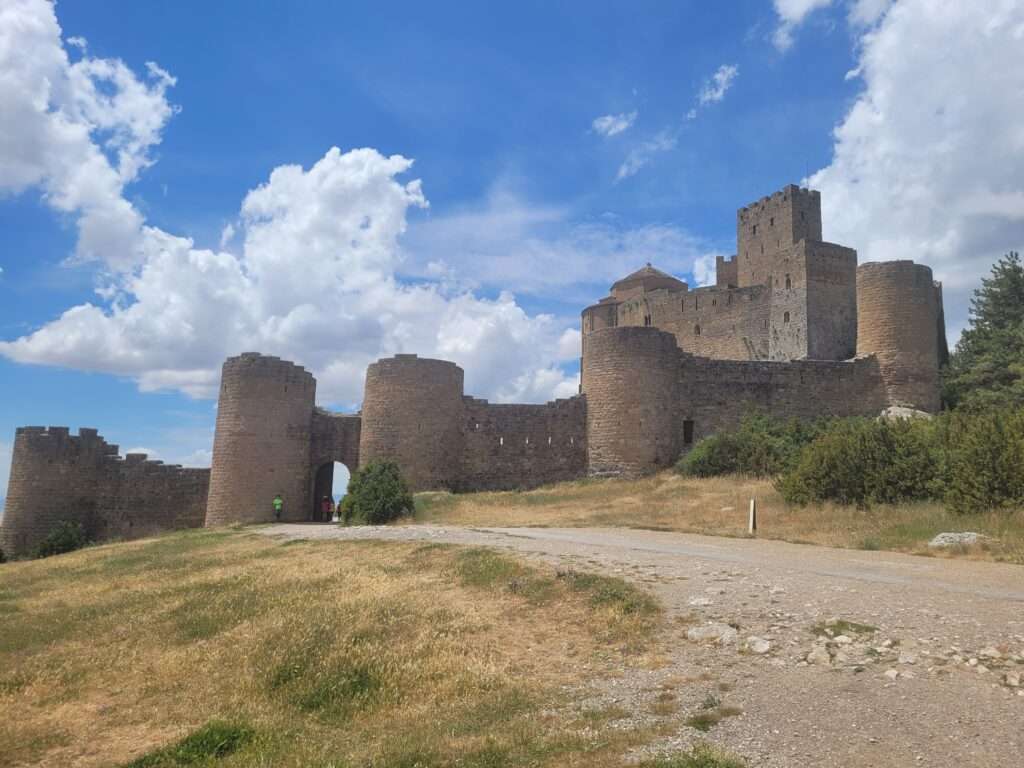
Photo above: At the time when Loarre Castle was used to protect the people of Loarre, walls were added to the fortress and are a sight to be seen.
Visiting Loarre Castle from Zaragoza
We visited the castle in mid-June, and it really wasn’t all that busy. I think it is because visiting here is not easy. I had inquired at the Zaragoza tourist office about how to visit, as we were traveling in Spain by train. I envisioned a robust and efficient connection available. However, I was informed that we would need to travel to Huesca (the easy part), and then from Huesca to Loarre Castle. And despite this being a highly recommended site, I was told that the transportation from Huesca to the castle was not well-coordinated and it would not work out for us using public transportation. It was recommended to rent a car because it would be efficient, and a beautiful drive. So that’s what we did. The next morning I pulled up my Expedia app and booked a same day rental from the Zaragoza Delicias train station for 30 Euro (gas was another 30 Euros). It made the perfect day-trip. We returned the car the same afternoon without any hassle. Parking at the castle itself was easy to find and free. When we made the drive, it became quite obvious why there were no easy public connections. The castle is located out in the country-side overlooking the land in all directions.
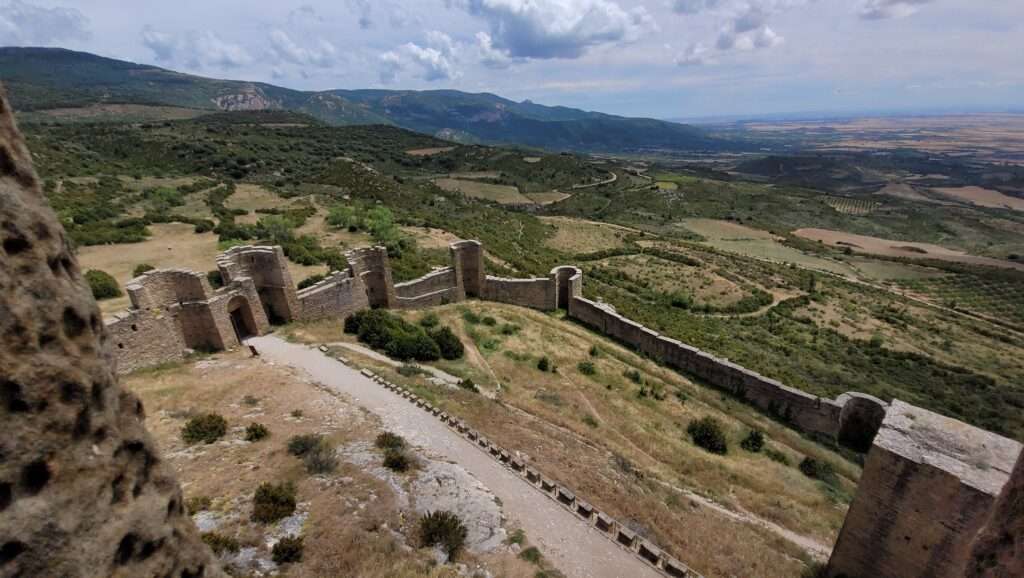
Video Footage of our visit to Loarre Castle
Exploring inside the fortress walls
The walls of the fortress date back to the 13th century. It has one rectangular and nine semi-circular towers. It’s walls are over a meter thick! Visitors show their tickets at the gate in the wall and are free to explore once inside.
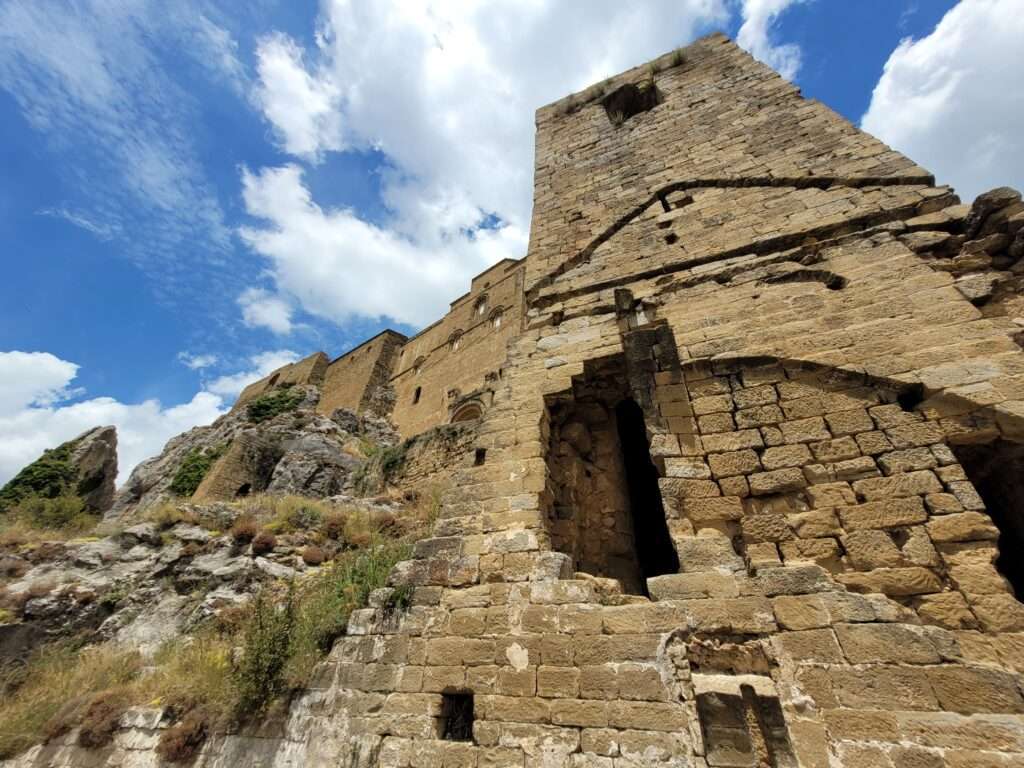
Photo above: The Albarrana Tower was used to keep watch and was the belltower of the former church. The structure is reasonably well preserved and fun to explore if you manage to climb inside.
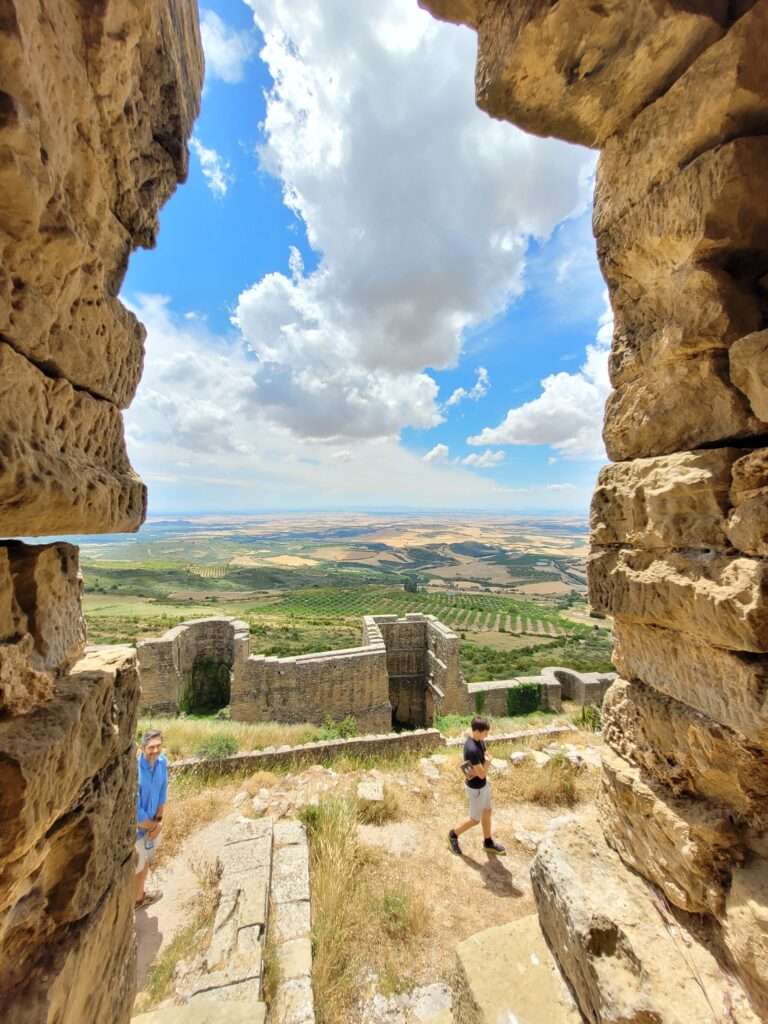
Photo above: It is a bit of a climb into the tower, but possible. I sent Sophia in to check it out for me. This photo is looking out through a hole.
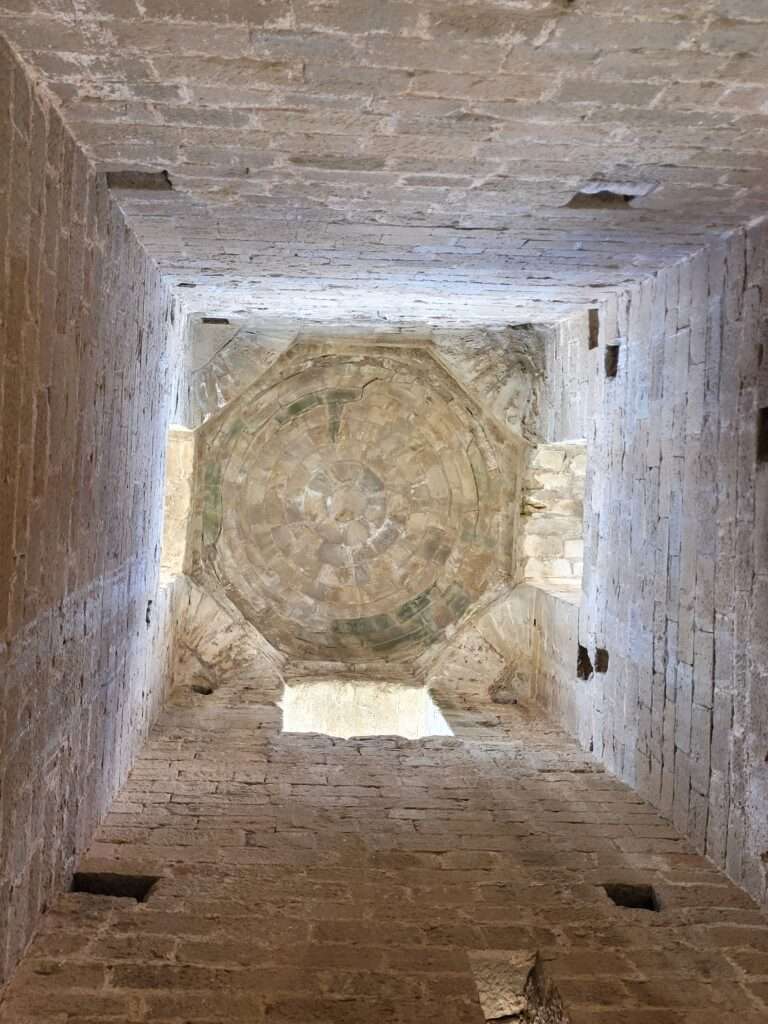
Photo above: Sophia took a photo of the roof of the tower from inside, so I could see what it looked like.
The fortress has its mysteries
We were greeted at the main entrance door with interesting details. The large doors stood open and the doorway was flanked with an arch supported by two columns with intriguing decor on each capital. Once we stepped through the doorway, we immediately noticed how interesting the stairs were too. They are two different levels, with higher steps along the side, and lower steps running in the middle. We learned that the reason for this design is not known, but it might have been that rain ran down the center or that different classes used different stairs.
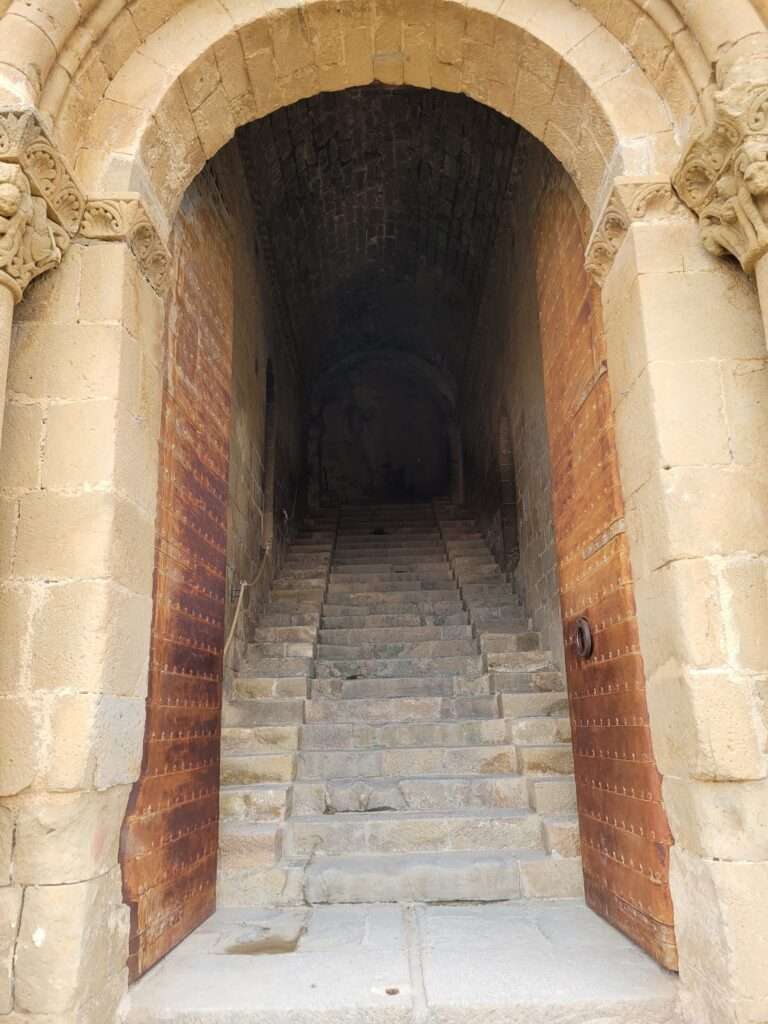
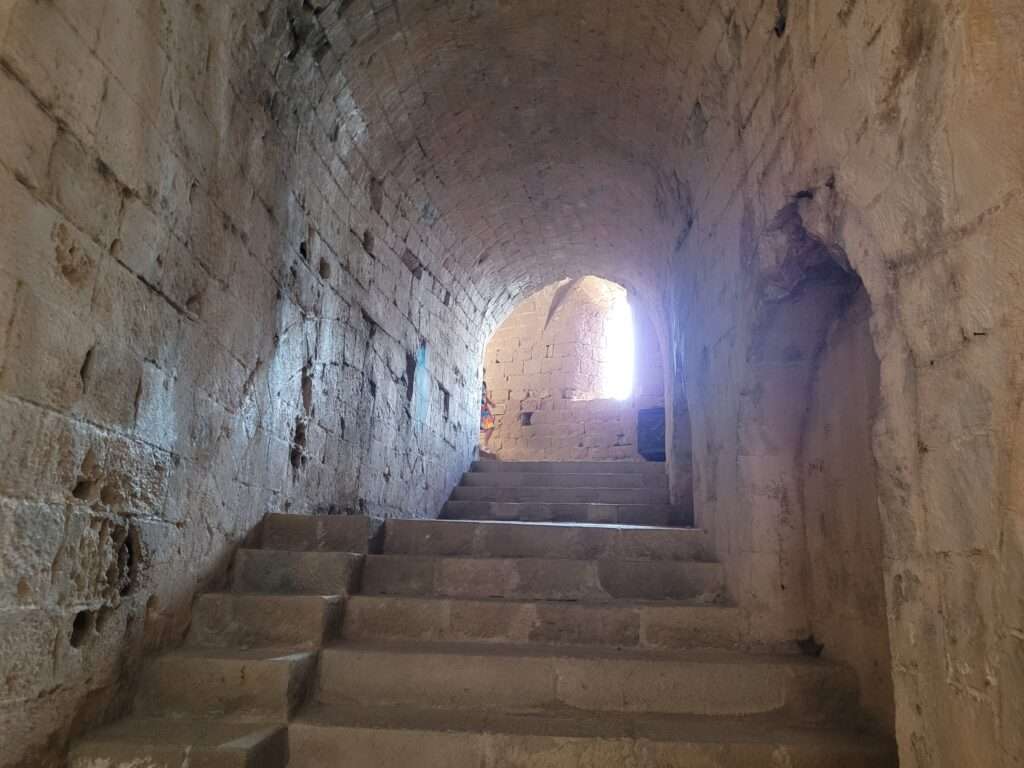
Photo above: A photo showing the different levels of the stairs. We tried them both out and well, they both worked to wear me out!
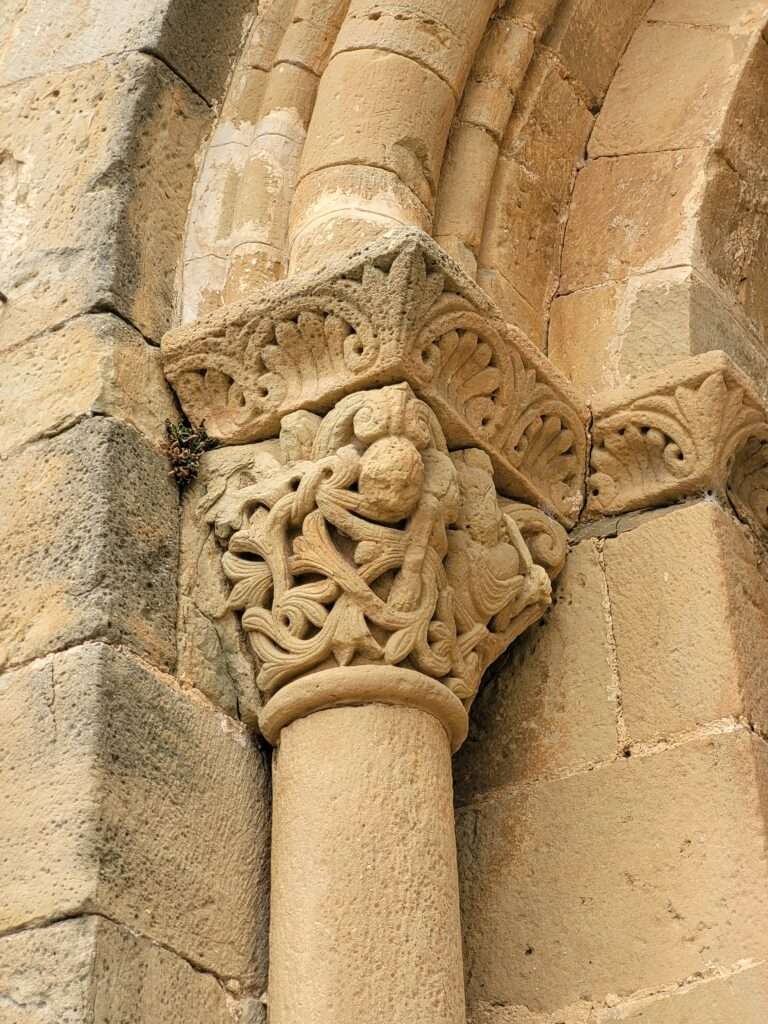
Photo above: This column is adorned with a soldier with a sword ready to decapitate visitors who break the rules.
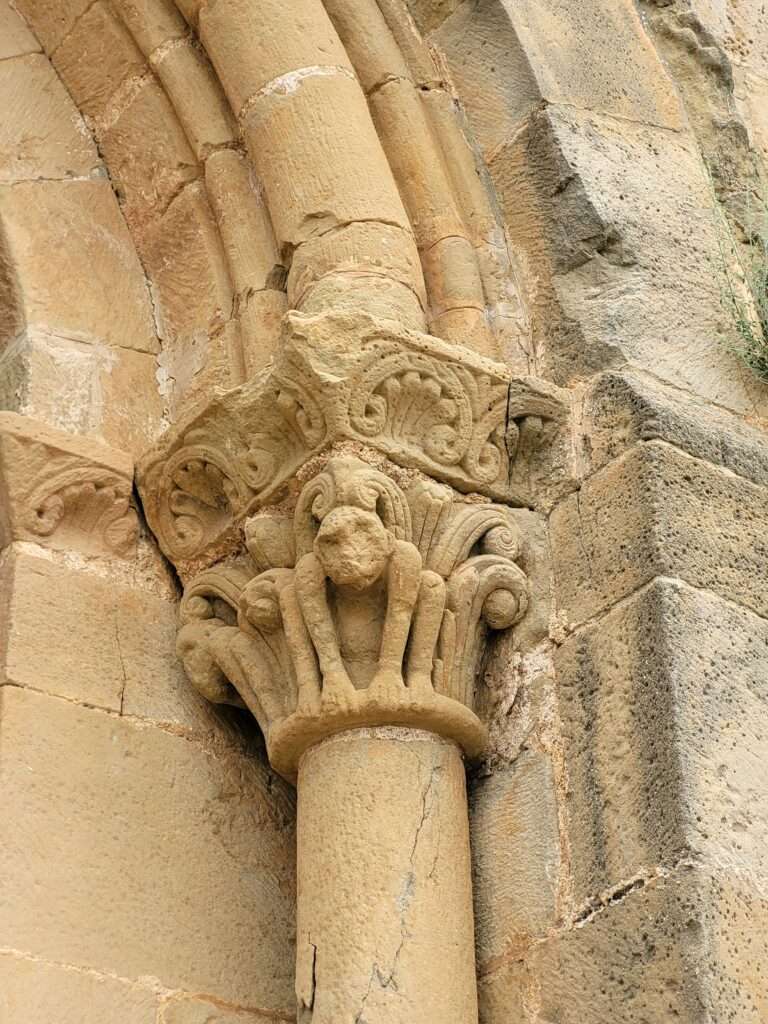
Photo above: This column is adorned with monkeys depicting “see, hear, don’t speak.”
Stopping in at the Church of St. Peter
This well-preserved Romanesque church has an impressive dome, checkered walls, and windows covered in alabaster. I overheard another visitor explain that the church was older than glass, so the windows were made from alabaster. Alabaster can be cut thin so that light can come through. I am so glad I overheard this, as this was the second place I had seen on this trip with these windows and I had no idea!
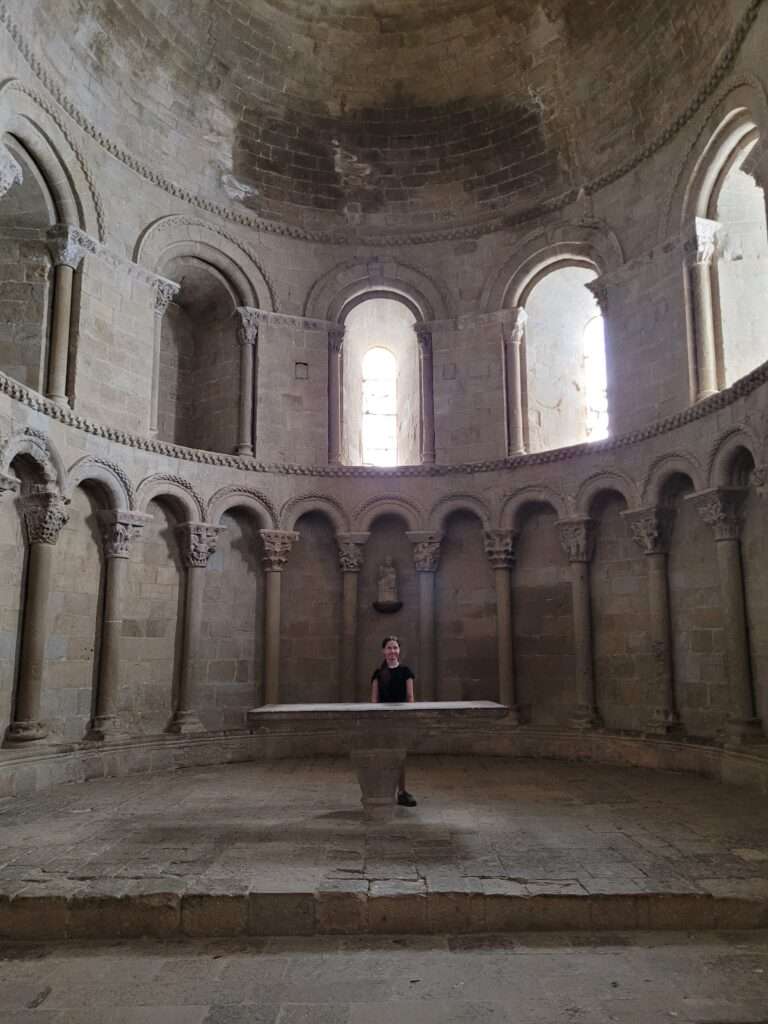
Photo above: Sophia posing at the altar, in the dome. Arches line the wall, with detailed capitals adorning each column, similar to the front door. However, each capital has a unique design.
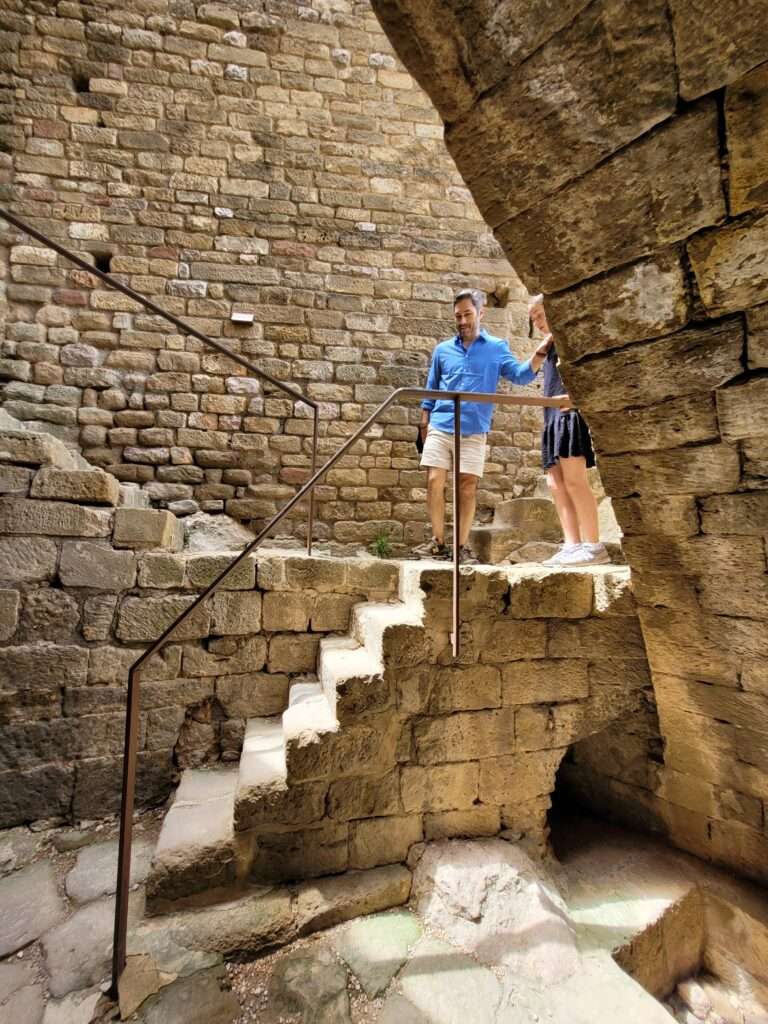
Photo above: Leaving the church, exploring involved lots of stones and stairs.
The monastery the monks abandoned
A series of rock tunnels leads visitors from the church to the monastery ruins. Monks once lived here and went about their daily lives. The stone arches we saw once held wooden floors. A corridor linked the monastery with the royal chapel. The monks soon left to live at Montearagon Castle.
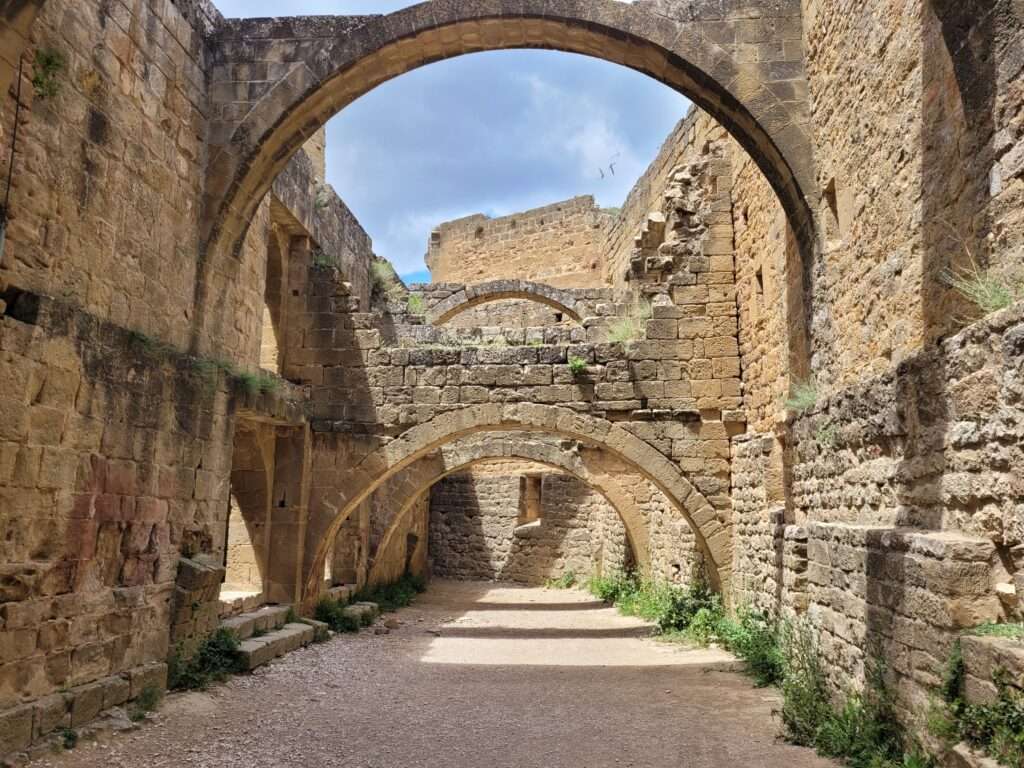
Photo above: The arches of the monastery are seen in the photo.
Nearby Montearagon Castle
After visiting Loarre Castle, we drove to another remote castle ruin, Montearagon Castle. It wasn’t too far of a drive with our rental car. It is also near Huesca and we used Google Maps to get us there. This Romanesque ruin was situated on another hilltop and is similar in age to Loarre Castle, accessible via a windy narrow roadway with fantastic views. There was only one other visitor when we were there. We were only able to visit the castle exterior, making a loop around it. The interior was gated shut. But it was clear that it is open at times, and my guess is we arrived too late in the day. More information about this site is available here and you may be able to make an appointment to ensure you can visit the interior by emailing: [email protected].
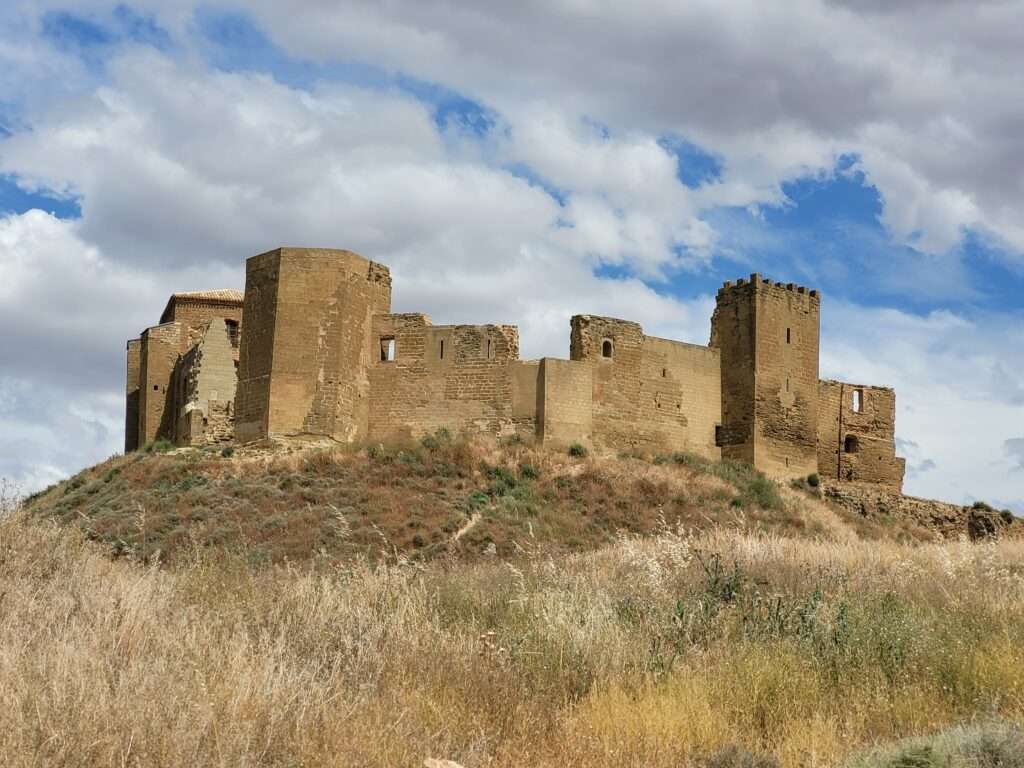
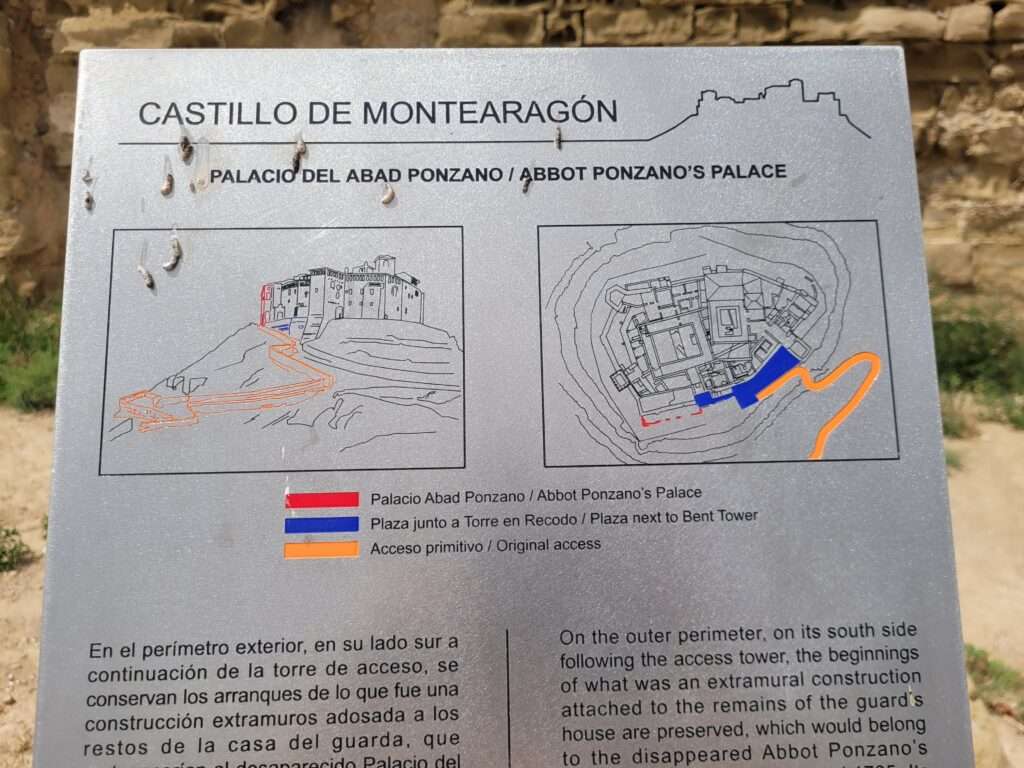
The military wing of the castle
At the top of the fortress, visitors come across the Arms Courtyard. This was the military area of the fortress. We took some time to explore this area, and while I didn’t include a photo in this post, the North Tower in this area includes a soldier’s kitchen. Within the courtyard, there is a also a small church, the Church of St. Mary.
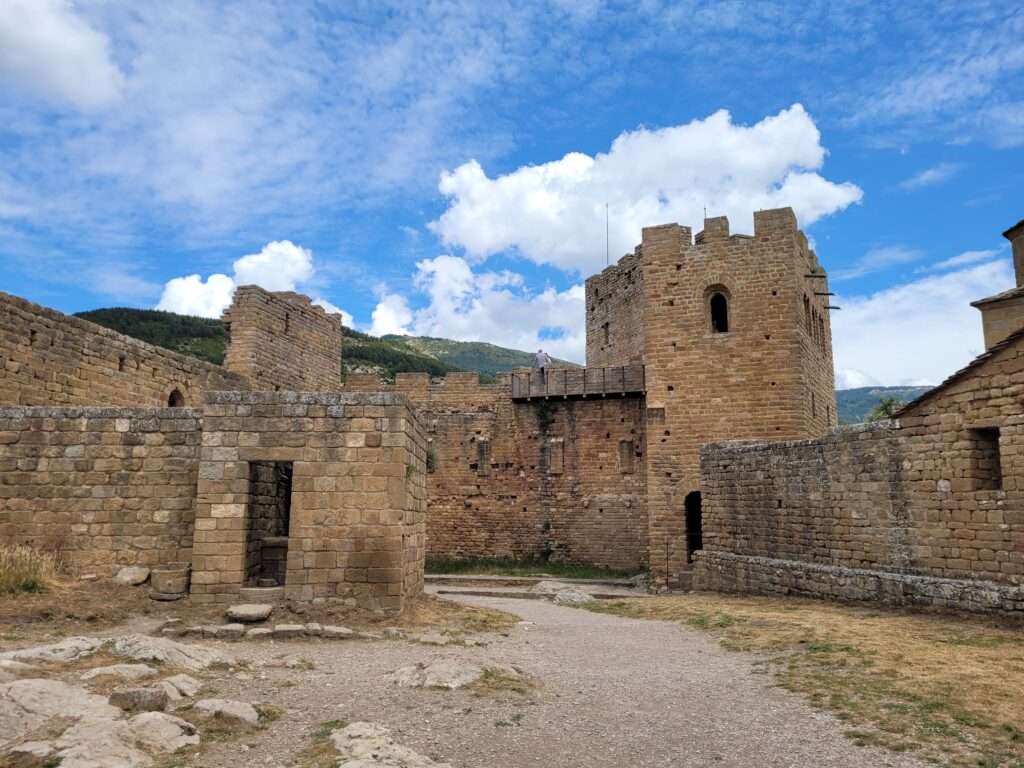
Photo above: The Arms Courtyard. The military section of the fortress was built to house about 15 soldiers.
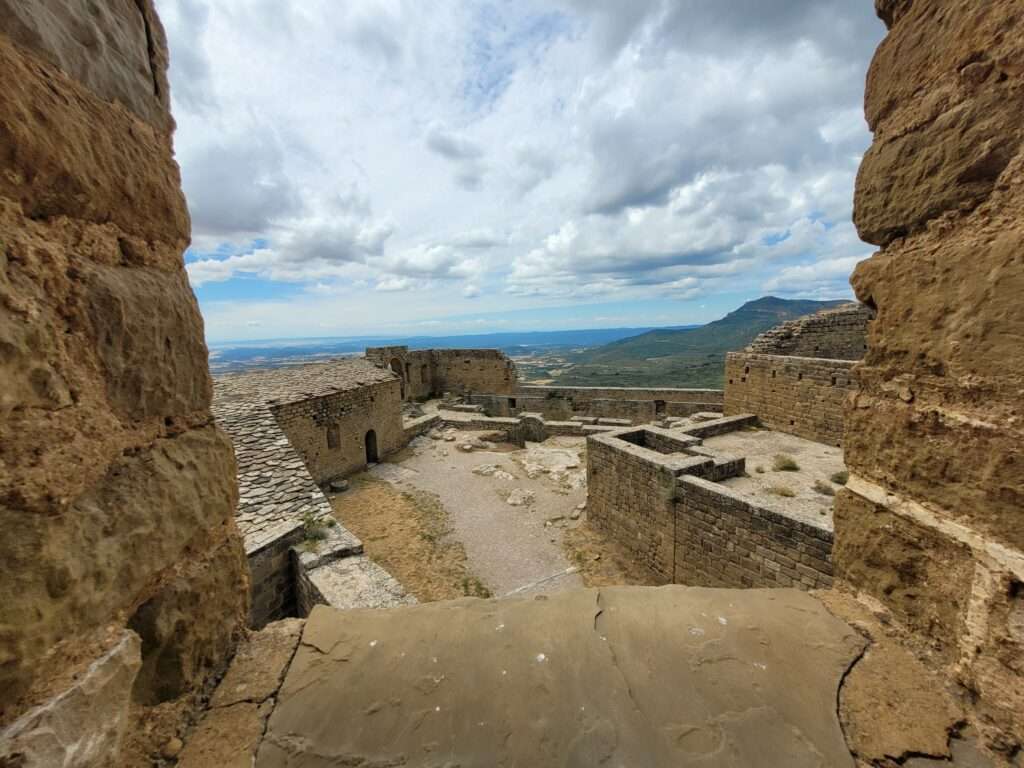
Photo above: The layout of the Arms Courtyard is well preserved. It has a water tank that is supposed to have been able to hold up to 80k liters of water.
Depicting the marks in its walls
One thing my family enjoyed during our visit, was finding various images and symbols carved into the fortress walls!
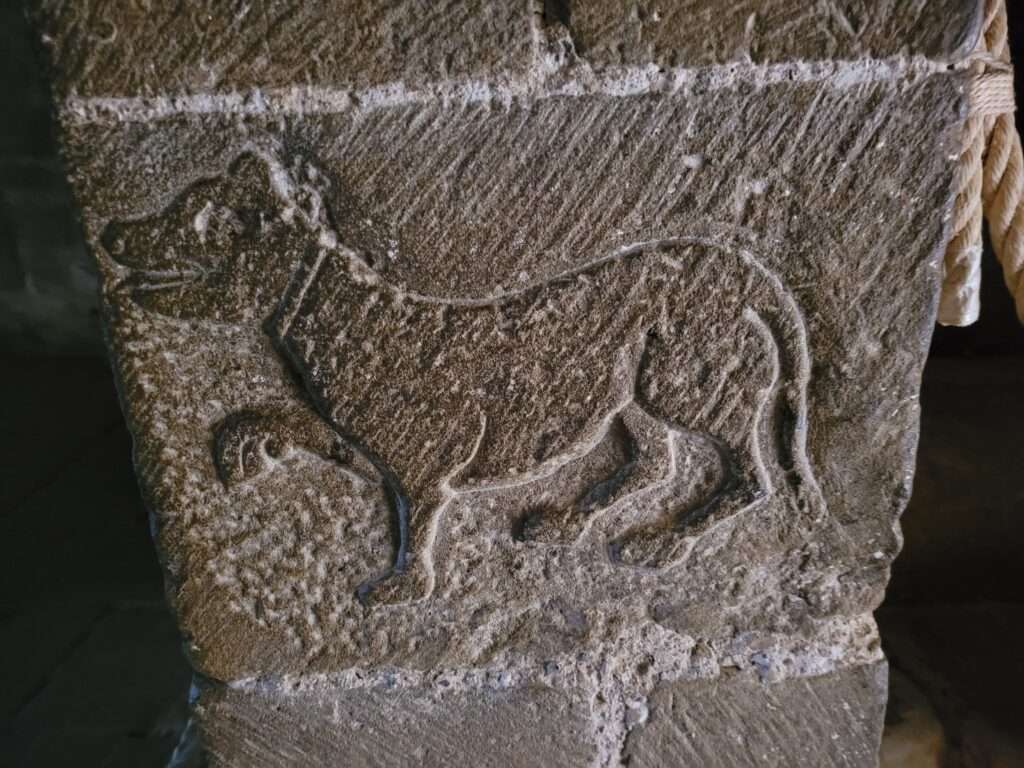
Photo above: The crypt near the entrance to the fortress has a dog carved into the door post!
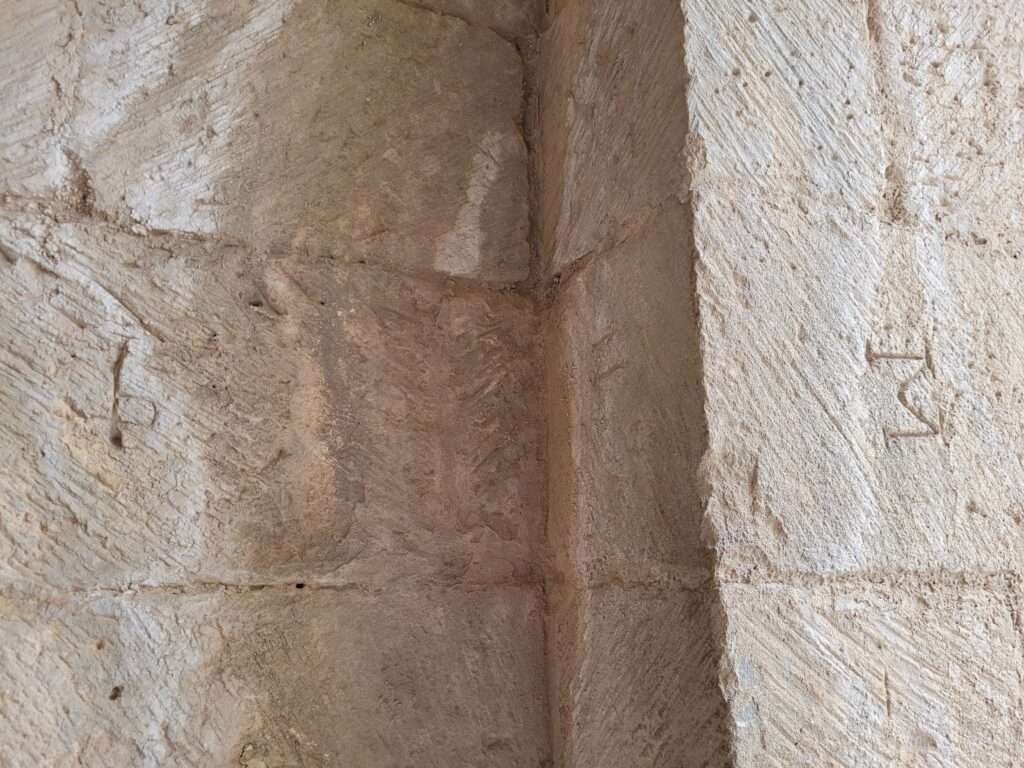
Photo above: The stonemasons who built the castle left marks in the stone. Visitors can look for them; in all, there are 40 different marks if you want to find them all!
The Queen's and Homage Towers
Toward the end of our visit, we got to go inside a few towers. The two we found most impressive were the Homage and Queen’s Towers. The Homage Tower was the tallest tower of the castle and is one of the best preserved towers from that era, dating back to the original castle. The only way to access the castle is by a bridge. Today, the bridge is stone, but it was once wood. The tower has a decorative chimney on the third floor used to provide heat.
The Queen’s Tower is distinguished by its three view windows on the third floor, adorned by mullions inside twin arches.
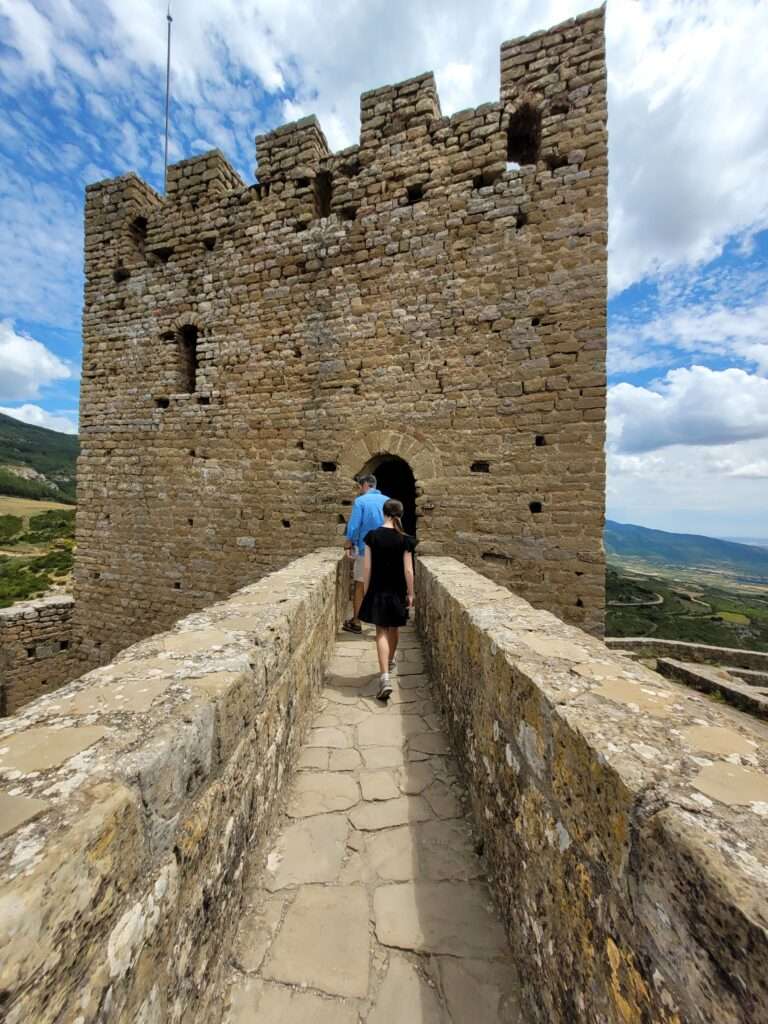
Photo above: Crossing the bridge to enter the Homage Tower.
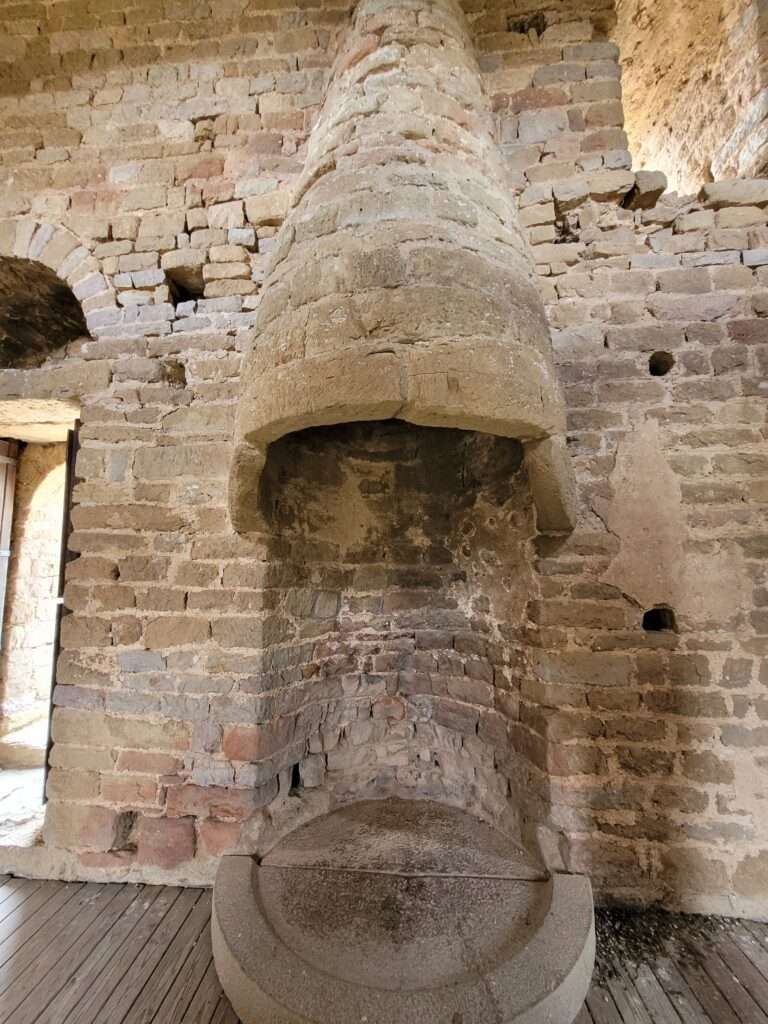
Photo above: The well-preserved Homage Tower chimney.
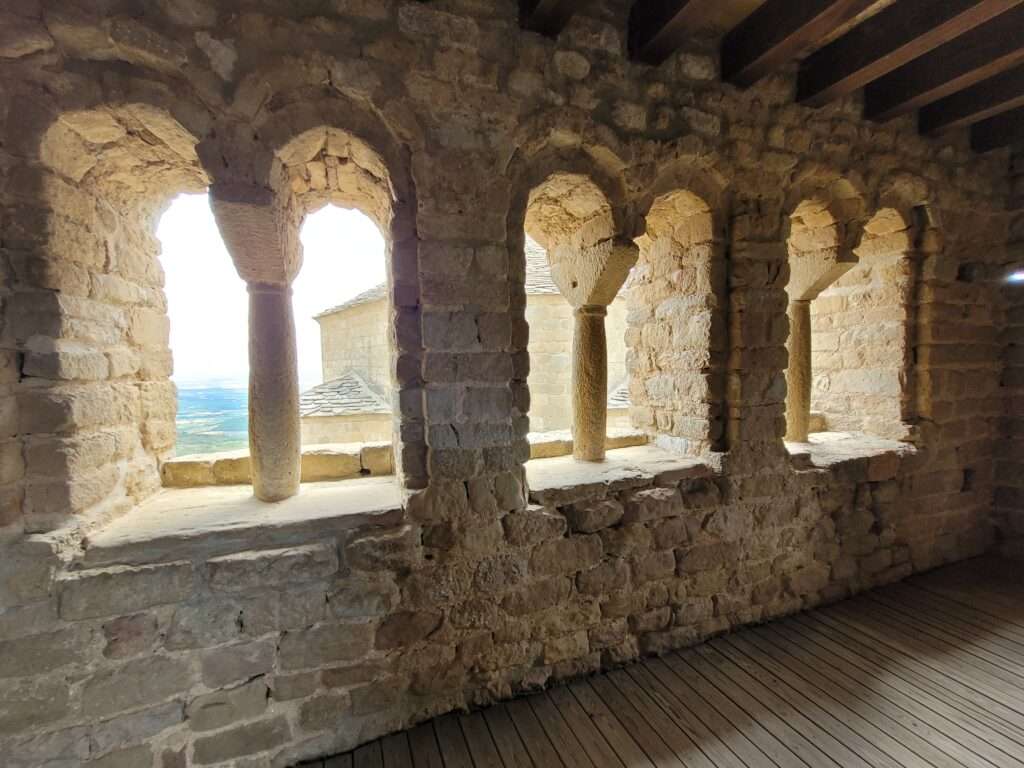
Photo above: The inside of the Queen’s Tower, showing the beautiful decorative windows befitting nobility.
Well worth the visit
We enjoyed our visit very much! The castle had so many hallways, and stone paths to explore. We explored freely. There are placards with names for each area and a number for the audio guide. While there were others visiting too, this site was not packed out. It seems lots of visitors to Spain must miss this gem. In addition to offering an impressive site, there are also amazing panoramic views from here.
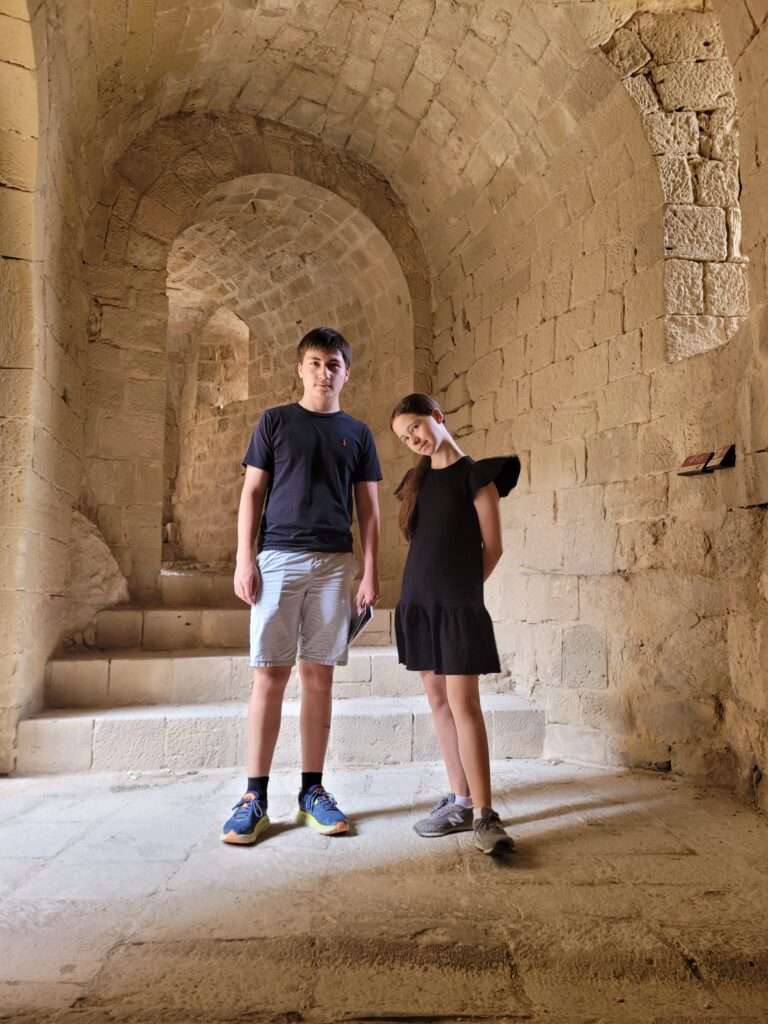
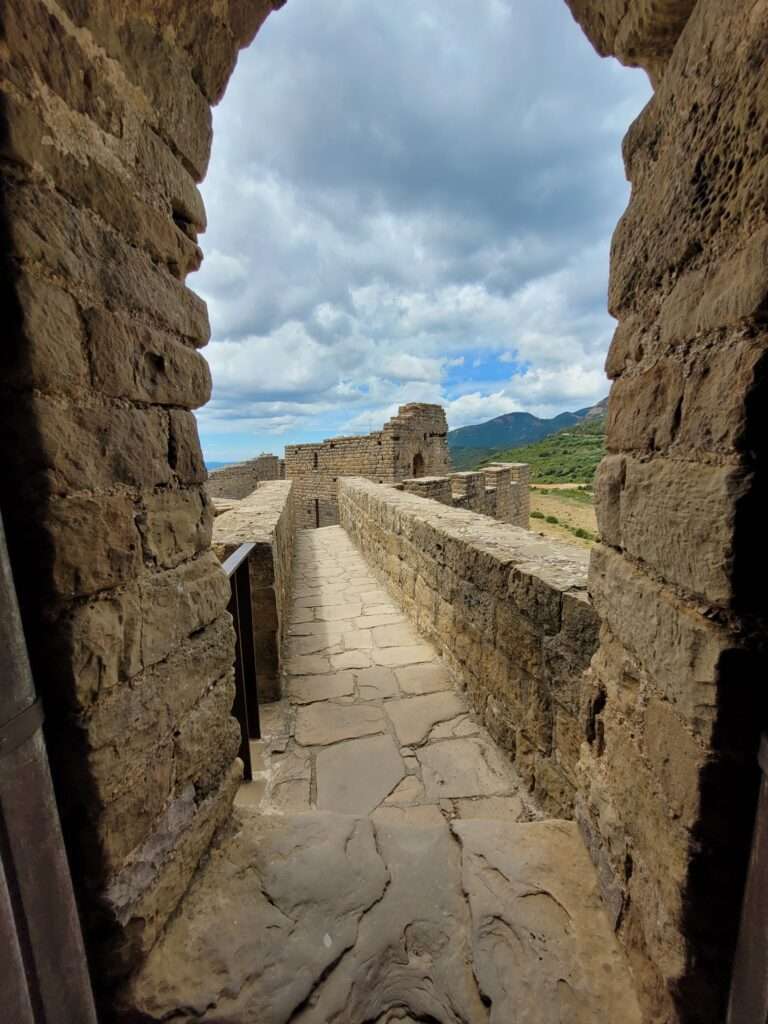
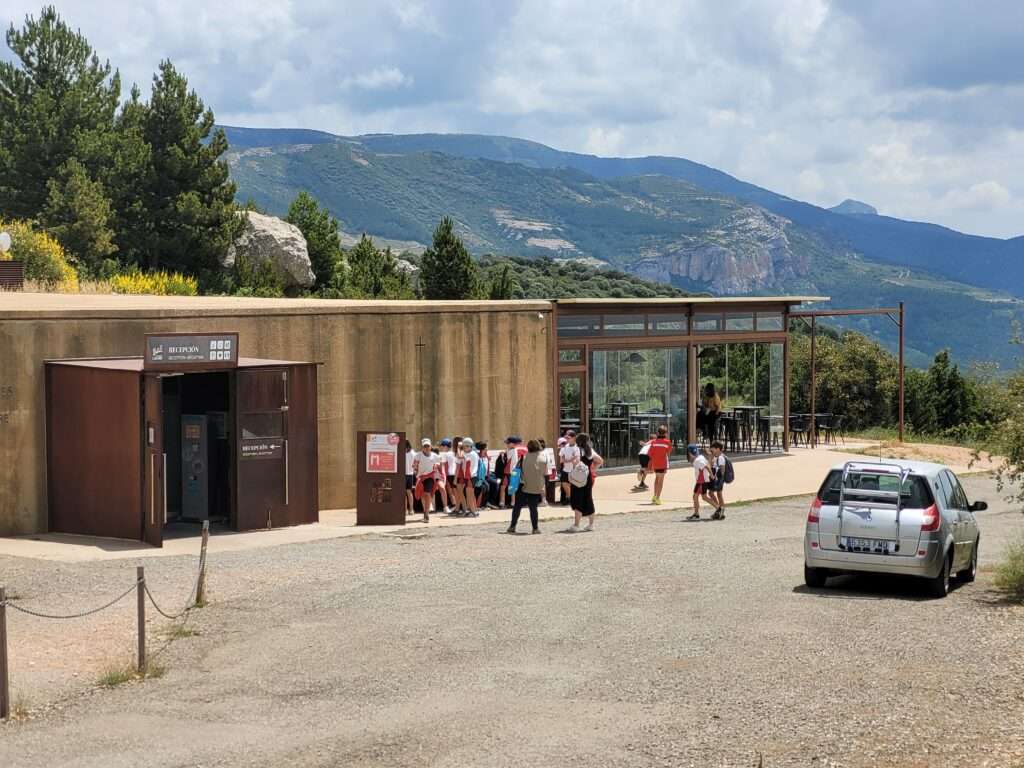
The visitor center and restaurant
The castle is a bit remote. But, if you forget to bring provisions, there is no need to worry. The castle has a lovely little restaurant inside the visitors center with a fantastic view. It was by far the busiest place at the castle. A short walk from the parking lot, you buy your tickets in here. And either before or after your visit to the castle, this is a great place to relax with a snack and a glass of wine (or other beverage if you are driving). Prices are very reasonable, and while no one in the restaurant spoke English, we managed to order everything we wanted without any issue. Also, they take credit cards!
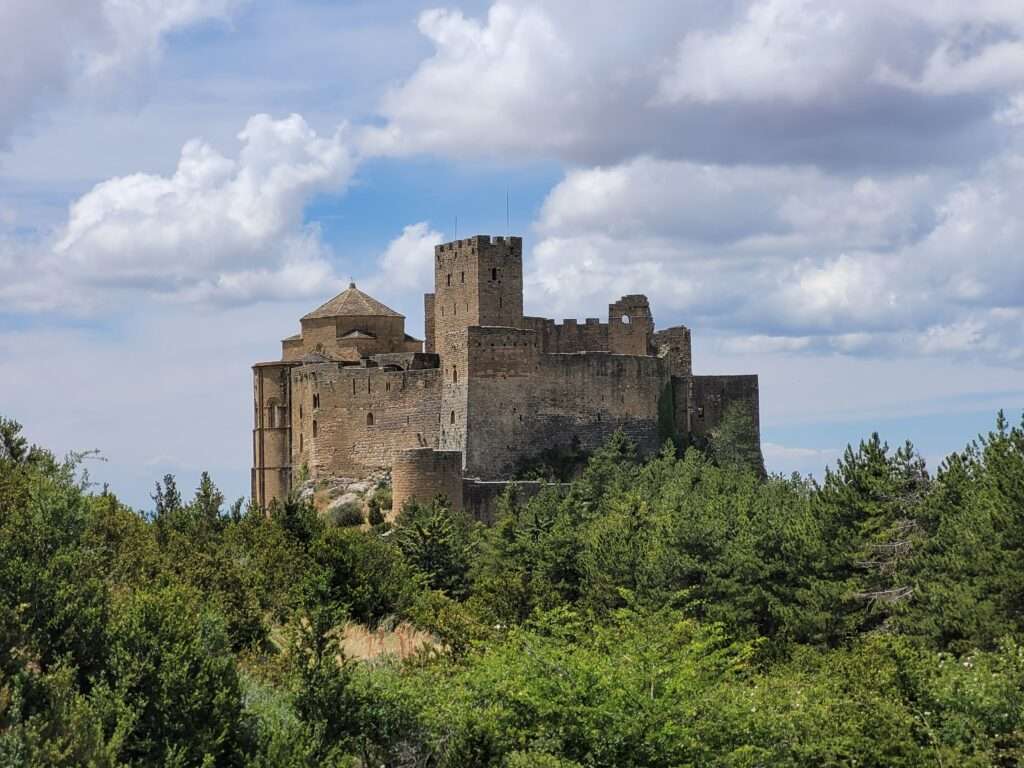
Make a full day out of the visit
When visiting the tourist office in Zaragoza to plan our trip to Loarre Castle, we were told the most impressive site to combine with this visit are the rock formations near Riglos, Spain, called the Mallos. However, there are also a number of walking paths around Loarre Castle, or you can visit Bolea, modern-day Loarre, Ayerbe, or Huesca. We opted to make a pit stop at Montearagon Castle and Huesca.

